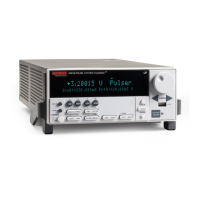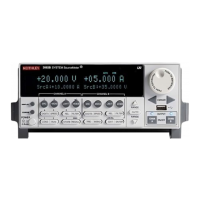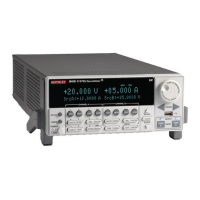So that:
For the common case of thermally grown oxide, x (before) = X
O
and x (after) = 0, so that
Where Q
O
is the effective charge. Divide Q
O
by the gate area to obtain mobile ion charge density per
unit area.
Simultaneous triangular-voltage sweep method for determining mobile
oxide charges
The simultaneous triangular-voltage sweep (STVS) method is very useful in determining the amount
and type of mobile carriers that are in the oxide. This method uses a triangular voltage ramp applied
to the gate of the device. The Model 595 applies a similar voltage ramp during its measurement. The
Model 595 measures the ionic displacement current, while the device is at an elevated temperature.
Elevating the temperature to approximately 300°C causes the high frequency curve to rise in
inversion until it is similar to the quasistatic curve. If there are no mobile charges, the quasistatic
curve remains approximately the same shape, except the depletion capacitance starts to approach
the oxide capacitance. If mobile charges exist, a capacitance spike will appear on the quasistatic C-V
curve when the mobile charges move from one side of the oxide to the other.
The quasistatic curve will peak during the movement of the mobile charge. Calculation of the mobile
charge involves taking the difference in the high frequency and quasistatic capacitance and
multiplying by the change in VGS as shown in the following:
Where:
• N
m
= mobile ion concentration (cm
-2
)
• +V
GS
= gate-substance voltage (V)
• -V
GS
= change in gate-substrate voltage (V)
• C
q
= quasistatic capacitance at given VGS (pF)
• C
b
= high frequency capacitance at given V
GS
(capacitance without mobile charges)(pF)
• q = electron charge = 1.60219X10
-19
C
• A = area of gate capacitor (cm
2
)

